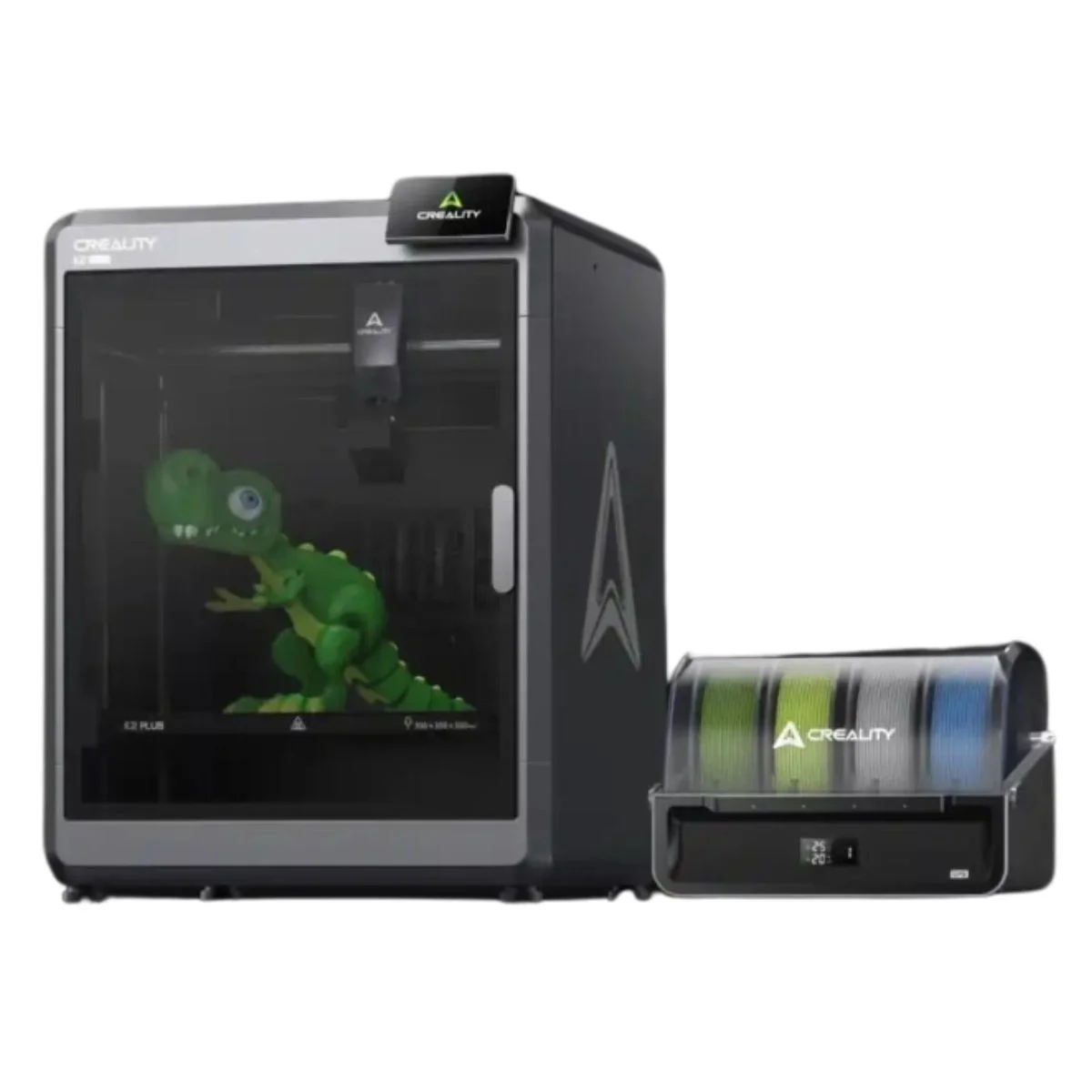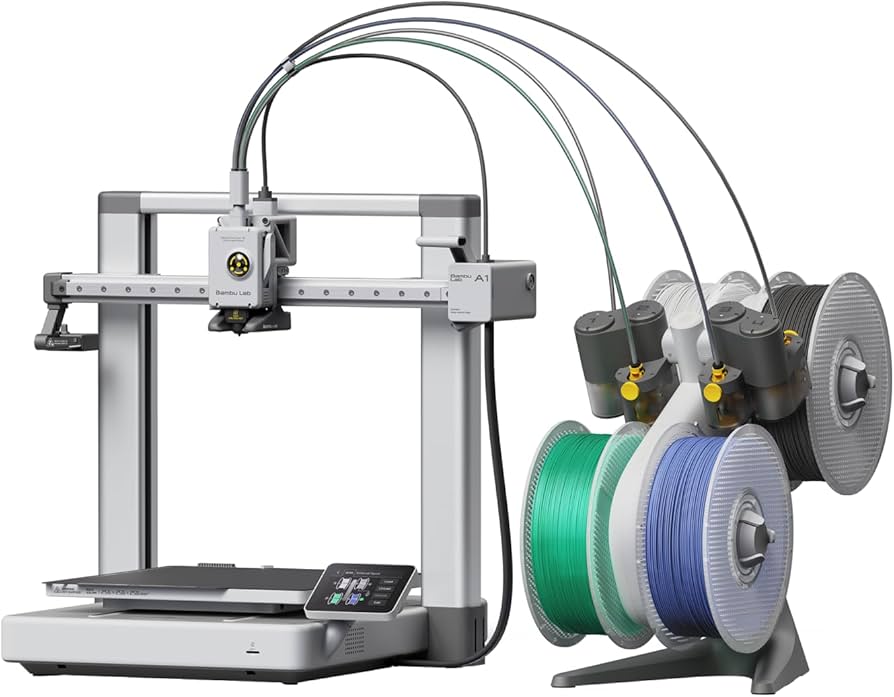Compare K2 Plus vs A1
Comparison between the best 3D printers
Choose the best 3D printer at the best price. The cheapest 3D printers are here.
Buy a 3D printer here with 3D Fila.
 |
 |
|
| Model | K2 Plus[BUY K2 Plus] |
A1[BUY A1] |
| Printing Material | Filament | Filament |
| Buy Filament for Creality K2 Plus | Buy Filament forBambu Lab A1 | |
| Estimated price | $1500,00 | $700,00 |
| Manufacturer | Creality | Bambu Lab |
| Release Year | 2024 | 2023 |
| Print Volume [mm] | 350x350x350 | 256x256x256 |
| Printer Size [mm] | 495x515x640 | 385x410x430 |
| Weight [kg] | 33,5 | 8,3 |
| Power Loss Recovery | YES | YES |
| Enclosed printer | YES | NO |
| Bed Leveling | Automatic | Automatic |
| Filament End Sensor | YES | YES |
| Bed type | Heated | Heated |
| Power supply system | Direct Drive | Direct Drive |
| Standard nozzle | 0,4 | 0,4 |
| Maximum Nozzle Temperature [°C] | 350 | 300 |
| Maximum Bed Temperature [°C] | 120 | 100 |
| Maximum printing speed [mm/s] | 600 | 500 |
| Filament holder | YES | YES |
| Camera for supervision | YES | YES |
| Recommended filaments | PLA, PETG, PET, TPU, PA, ASA, PC, PLA CE, PA-CF, PET-CF | PLA, PETG, TPU, PVA |
| Recommended slicers | Creality Print 5, Bambu Studio, Super Slicer, Cura, Prusa Slicer, Orca Slicer | SuperSlicer, PrusaSlicer, Cura, OrcaSlicer |
| Maximum Resolution [mm] | 0,1 | 0,1 |
| Processor | ||
| Display | Touchscreen 4,3'' | Touchscreen 3,5 |
| Power Supply | 1200 W | 350 W |
| Connectivity | USB / WIfi | Wi-Fi, Bambu-Bus, Cartão Micro SD |
| Operating systems | Windows, Linux, Macbook | Windows, Linux, Macbook |
| Date of registration in the system | 2024-06-26 | 2024-07-17 |
| Release date | 2024 | 2023 |
| Extra features | The Creality K2 Plus 3D Printer stands out for its multicolor printing, large build volume (350x350x350 mm) and Apus Direct Drive extruder with tri-metal protection nozzle. It features automatic anti-tilt leveling, FOC closed-loop motors and active chamber heating. In addition, it has an intelligent CFS filament management system, cameras for calibration and monitoring, a 4.3-inch touchscreen and advanced sensors to optimize the printing process. | The BambuLab A1 printer features fully automatic calibration, multi-color printing with the AMS system, active flow rate compensation, quick nozzle change with a clip, active motor noise cancellation, a build volume of 256x256x256 mm³, a maximum extruder temperature of 300°C, and a heated bed of up to 100°C. In addition, it has high precision, a machine health management system and an intuitive 3.5-inch touchscreen interface. |
| Support for multiple colors and materials (AMS and CFS) | YES | YES |
Notes * |
||
| Cost-benefit | 7 / 10 | 7 / 10 |
| Hardware | 7.2 / 10 | 4.8 / 10 |
| Tela | . | . |
| Print volume | 4 / 10 | 4 / 10 |
| Performance | 5 / 10 | 4 / 10 |
| [BUY K2 Plus] | [BUY A1] |
Conclusion |
| In comparing the Creality K2 Plus and the Bambu Lab A1 3D printers, several key factors contribute to the overall evaluation of each model. The Creality K2 Plus emerges as a high-performance printer, boasting a larger print volume, advanced heating capabilities, and a robust construction that includes an enclosed build chamber. It supports a wide range of filament materials and offers impressive resolution, making it well-suited for intricate projects. Additional features such as its extensive automatic calibration, intelligent filament management system, and a larger touchscreen enhance user experience and operational efficiency. The K2 Plus is designed for serious hobbyists and professionals who prioritize versatility and performance in their 3D printing. Conversely, the Bambu Lab A1 offers a more compact and lightweight option, suitable for those with limited space or seeking a more budget-friendly solution. While it has a smaller print volume and slightly lower maximum temperature settings compared to its counterpart, it still boasts commendable features like automatic calibration and multi-color printing capabilities. For users who prioritize a simpler setup and ease of use, the A1 stands out as a practical choice. Its energy-efficient power supply and intuitive interface make it user-friendly while still delivering satisfactory performance for various printing needs. Ultimately, the decision between these two printers will hinge on specific user requirements, such as the need for a larger build volume and advanced features versus a preference for affordability and ease of use. The K2 Plus exemplifies greater potential for complex projects and material versatility, while the A1 serves as a highly functional entry-level machine for users looking to explore 3D printing without a significant financial commitment. |

